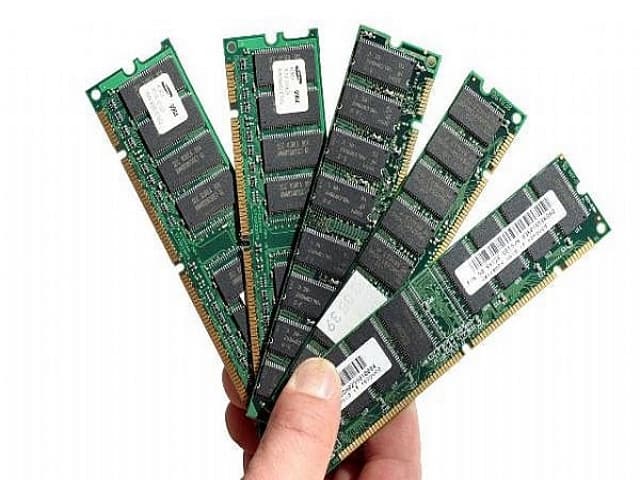Are you tired of your computer feeling like it’s running on fumes? Does your screen freeze more often than a horror movie villain? Well, fear not because we have the solution to your tech woes—RAM! Yes, that’s right. It’s time to give your computer a little memory makeover, and we’re here to guide you through the process. But before we dive into the technical details, let’s have a little fun and explore the wacky world of RAM.
RAM (random access memory) is essential for any computer system’s smooth and efficient functioning. It is a temporary storage medium used by the processor to store data that is being actively used. Unlike the hard drive, a secondary storage device that holds data for long-term use, RAM provides the processor access to data that is needed immediately. You can learn more about RAM brands in our article.

RAM is called ‘random access’ memory because data can be retrieved and stored in any random order, not just sequentially like in a hard drive. RAM is a type of volatile memory, which means that it requires constant power to retain the data stored in it. This also means that the data stored in RAM is lost when the computer is turned off or restarted.
RAM plays a crucial role in determining a computer system’s speed and performance. The more RAM a computer has, the faster it can process data and perform tasks. RAM technology has evolved over the years, with current computers having DDR4 RAM that enables faster data transfer rates and offers greater bandwidth.
4x8gb vs. 2x16GB RAM
In practice, 4×8 GB RAM has the same performance as 2×16 GB RAM. However, it is better to choose 2×16 GB due to lower power consumption and better upgrade possibilities. 4×8 GB DIMMs will consume more power and generate more heat than 2x16GB DIMMs.
When choosing between 4x8GB or 2x16GB RAM, there are a few factors to consider.
First, as you mentioned, both configurations will operate in dual-channel mode, assuming that the motherboard and CPU support it. Dual-channel mode allows for higher memory bandwidth, improving performance in some applications.
However, there are a few other differences to consider. One is future upgradeability. Using all four RAM slots with 4x8GB DIMMs, you cannot add more RAM without replacing the existing modules. On the other hand, if you use 2x16GB DIMMs, you will have two free RAM slots available for future upgrades, which can be a significant advantage.
Another factor to consider is compatibility. Some motherboards and CPUs may have limitations on the amount or configuration of RAM they can support. Therefore, it is essential to check the specifications of your hardware before purchasing any RAM modules.
Finally, there is also a slight difference in power consumption and heat output between the two configurations. For example, 4x8GB DIMMs will consume more power and generate more heat than 2x16GB DIMMs. While this difference may not be significant, it is something to consider if you are building a system with strict power or cooling requirements.
Overall, both configurations will perform similarly, assuming they operate in dual-channel mode. However, factors such as future upgradeability, compatibility, and power consumption may make one configuration more favorable, depending on your specific needs.
When selecting RAM for gaming, it’s a common misconception that more sticks equate to better performance. However, this isn’t necessarily true. The amount of RAM and latency is far more crucial in determining your PC’s performance.
Look at the difference between 4 x 8GB and 2 x 16GB RAM. Initially, it may seem like they’re the same, but some key differences exist.
To begin with, having more RAM sticks will keep more RAM pages open simultaneously. This can be useful in certain situations, but it’s a trivial difference compared to the size of the caches. The impact of having more RAM sticks on gaming performance is negligible.
On the other hand, the amount of RAM you have and its latency have a far more significant impact on gaming performance. So, although you may think that having a higher speed of RAM will lead to better gaming performance, this is largely untrue, and your focus should be on the amount of RAM and its latency.
This is because most games do not require more than 16GB of RAM. Therefore, anything beyond that is generally overkill and will not improve game performance.
Moreover, the timing and latency of your RAM are more important than the number of sticks you have. In terms of timing, the lower the timing, the quicker the RAM can read and write data. This results in faster processing speeds and, ultimately, better gaming performance.
Additionally, the size of the individual RAM sticks also plays a role in gaming performance. More giant bats, such as 2 x 16GB, will draw less power and provide better upgrade potential than multiple smaller posts.
In conclusion, when it comes to gaming, RAM amount and latency are the priority, and whether you choose 4 x 8GB or 2 x 16GB will depend on your specific needs. However, it is always worthwhile to do some research and compare the specifications of the memory you plan to purchase and consider more important factors other than the number of sticks or the speed of the RAM. This will ensure you get the best gaming performance out of your PC.


